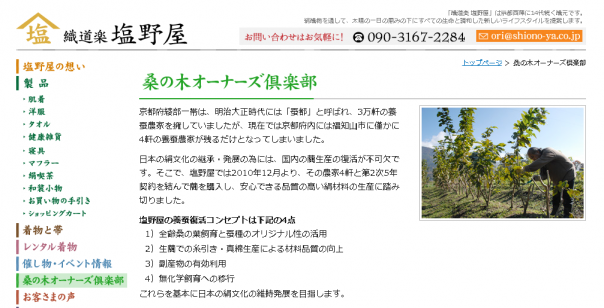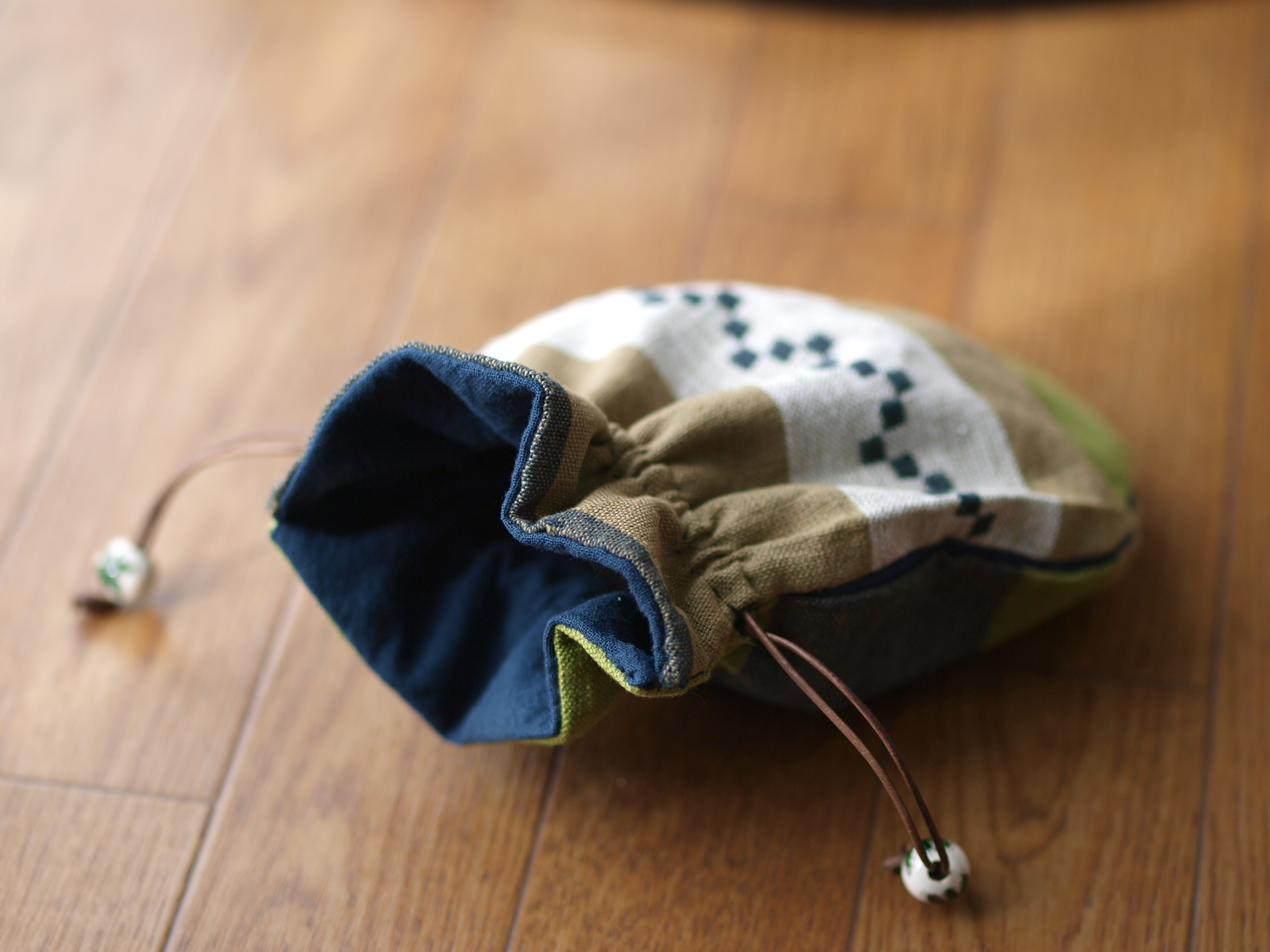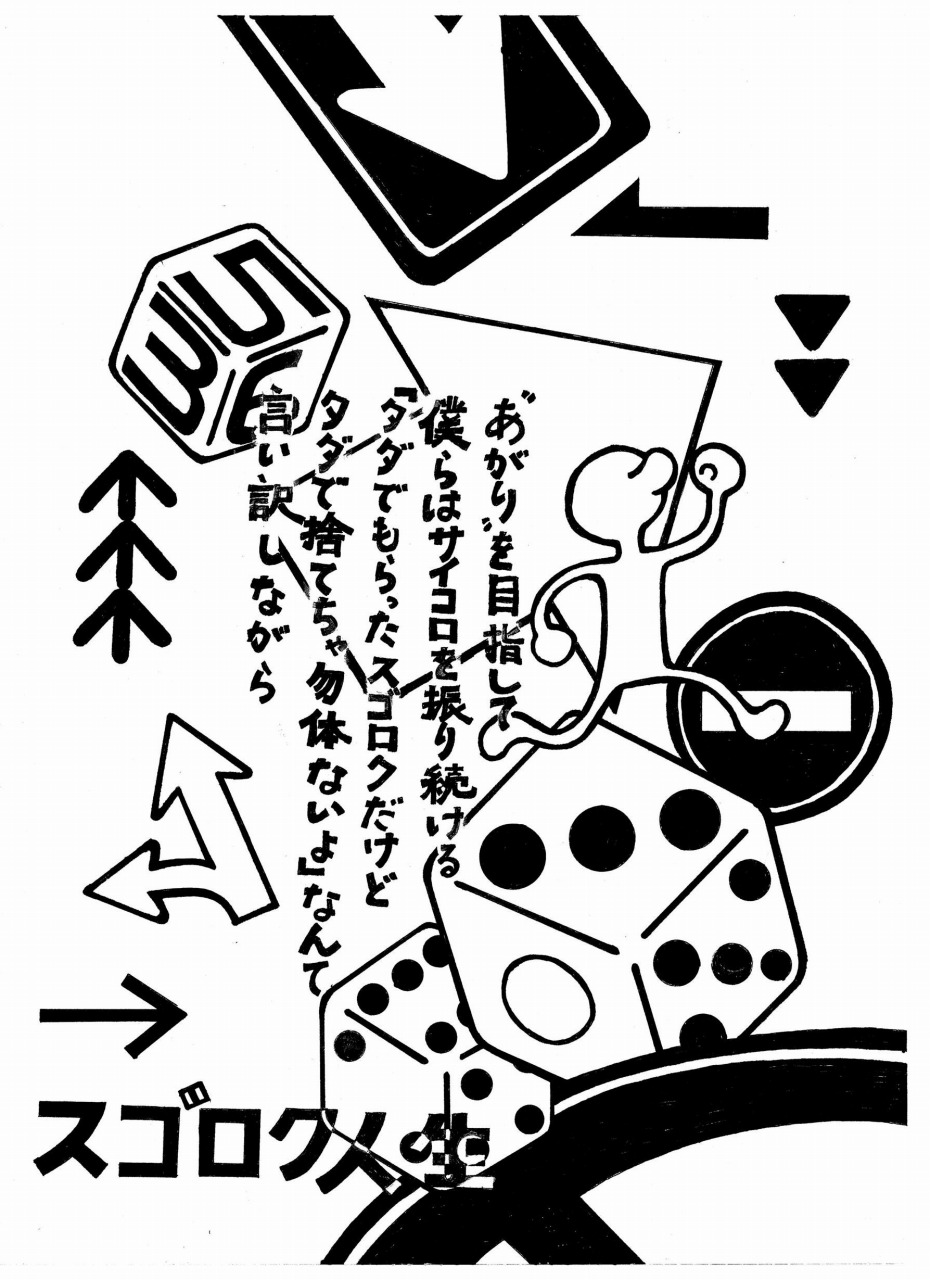突然ですが、web屋 内藤は日本のものづくりを応援しています。
日本製は日本産?
先だって開腹手術をした後、お腹を冷やさないように言われて絹の腹巻を探していて分かったことがあります。
「日本製」と書いてあっても、実はその原材料の生糸は9割以上が輸入に頼っているのでした。養蚕業は衰退を辿っていて、無化学飼育の国産繭はほぼ壊滅的らしいのです。
丹後織物工業組合の統計資料では、平成25年度の繭産地は下記となっています。
ブラジル:55% 中国四川省:40% 日本:5%
これは、MAYUKO絹工房を運営されている丹後ちりめんの織元、今井織物株式会社さんから教えていただきました。
桑の木オーナーズ倶楽部で養蚕業を応援

そんな中、京都は西陣織の十四代目織元の服部芳和氏が桑の栽培から織りに至るまで一貫したものづくりをするべく頑張っていらっしゃることを知りました。
桑の木オーナーズ倶楽部を立ち上げ、寄付を募っていらっしゃいます。一口1万円からで、恥ずかしながら一口しか寄付できませんでしたが、それでも少しでも役に立てばと思っています。
http://www.shiono-ya.co.jp/owner/index.html
web屋にできることであればお手伝いします
ものを買うのに安い方が良いに越したことはありません。自分もカツカツの生活ですが、それでもこのままでは日本のものづくりが崩壊してしまいます。
自分にも何かできることはないかと思っていますが、例えば自分の業務で手伝えることがあればお手伝いしたいと考えています。
日本の第一次産業の衰退が心細いです。かといって今から自分が農業できるかと言われるとやっぱり難しいです。
国産にこだわった製品をつくっていらっしゃる方、もし私にできることがあればお手伝いいたします。
…と言いつつ、お問い合わせフォームがないのですが、もしFacebookを使っている方が近くにいらっしゃいましたらその方を経由してご連絡ください。
お手数をおかけして申し訳ございませんが、何卒よろしくお願い申し上げます。
The Truth and Lie About 100% Organic Silk Made In Japan
Support to breeding silk worms from organic mulberry trees in Japan
Though abdominal surgeries allow you to go home within three to four days, postoperative care is essential for quick recovery. This year, I went through an abdominal surgery, and was advised to wrap my abdomen in a stomach-band, an abdominal warmer (made of silk, called “hara-maki” in Japanese) so that the wound could be healed effectively.
As I was searching for an appropriate hara-maki, I noticed something strange: Though the label said “Made in Japan,” it seemed quite deceptive because 90% of the raw silk thread used in the hara-maki is actually imported from abroad. This indicates that due to a significant decline in the silk farming industry, Japanese domestic organic silk worm breeding has been devastated.
According to statistics issued by the Tango Textile Manufacturing Association, the main production areas for silk in 2013 were as follows:
Brazil: 55%
China (Shichuan Province): 40%
Japan: 5%
Mr. Yoshikazu Hattori, a domestic manufacturer of Nishijin Ori (famous kimono silk from Kyoto), has been making silk the traditional way – from mulberry tree cultivation to the spinning of the final product for 14 generations. He began the “Mulberry Tree Owners Club,” and is now collecting donations to support this project. Donations start at 10,000 per person. Although I wanted to contribute more, I personally donated 10,000 hoping that even little help could create a noticeable impact in terms of improving the Japanese silk industry. To get a clear idea, this link would be of great help: http://www.shiono-ya.co.jp/owner/index.html.
It is not always a good idea to buy something just because it is cheap. Though I am not a rich person, I still believe that not spending our money on locally-made products would increase the chances of the collapse of traditional Japanese manufacturing.
As an individual, there is little I can do. However, if given a chance, I would like to lend my skills to support this industry.
The gradual loss of the primary industry in Japan is disheartening. No matter how hard we try, reviving Japanese agriculture and manufacturing will not be easy.
When I spoke to Mrs. Hattori about crowdfunding, she told me that she had definitely heard about this concept well, but she admits herself that she is not an IT expert. However, she thought that it would be too difficult for her to organise by herself and she wasn’t sure how she should even begin. So, after talking to Mrs. Hattori, I decided to offer doing it on her behalf.
Clearing a field, cultivating mulberry trees, and breeding silk worms take a total of three years from start to finish. During this time, the income for the farmers will be zero. As a support, we would like to use crowdfunding to collect donations, regardless of the amount, to support this enterprise.
This year, the Tomioka Silk Mill and Related Sites in Gunma Prefecture were given UNESCO World Heritage status. Japanese silk is revered for its beauty and quality not only in Japan but all over the world. To play a significant role in reviving this struggling industry, we would like to collect donations, no matter how small.
I suppose that foreign people appreciate the value of the Japanese traditional kimono culture more than we Japanese sadly. Adding to it, the recent weak yen might be an advantage. Therefore this is a test to estimate how many people in foreign countries have an interest in preserving Japanese tradition. If many people have an interest, then I would plan seriously to publish this on an overseas crowd funding service.
If you have time, I wonder if you could provide your thought about this text from your view point.









